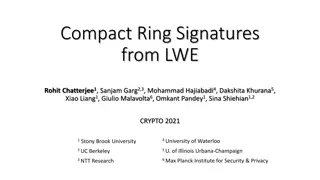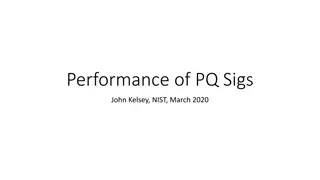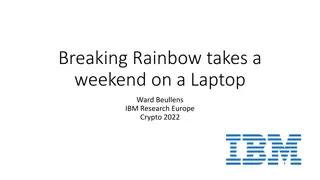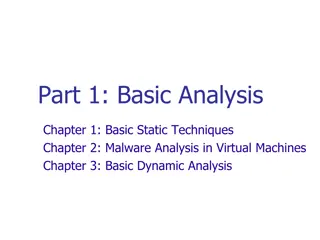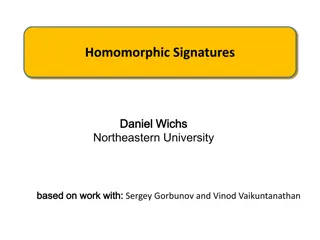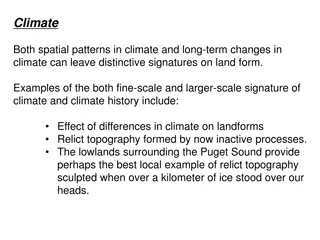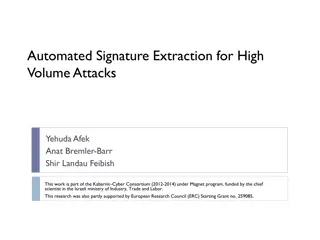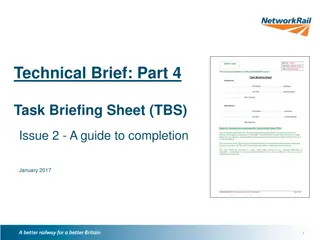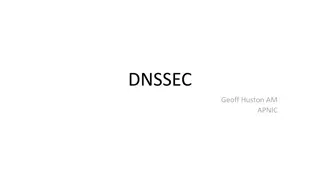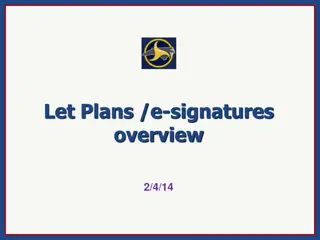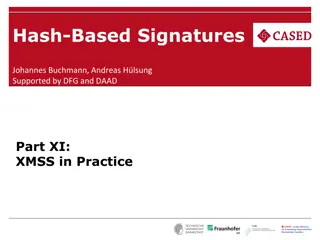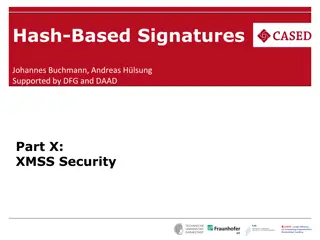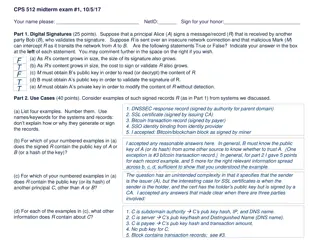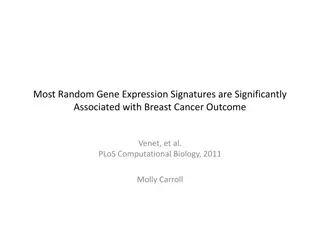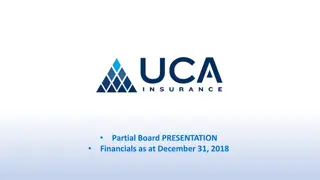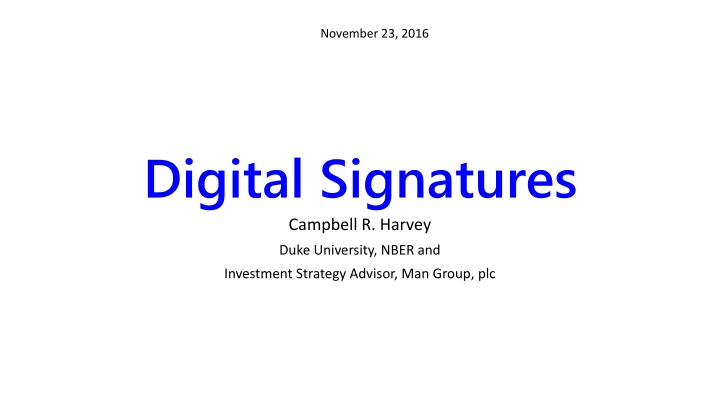
Digital Signatures and Key Generation
Learn about digital signatures, key generation, and the process of signing and verifying messages for secure communication. Discover how public and private keys work together in creating secure digital signatures. Explore the underlying concepts behind the Elliptic Curve Digital Signature Algorithm (ECDSA) and its applications in cryptography.
Download Presentation

Please find below an Image/Link to download the presentation.
The content on the website is provided AS IS for your information and personal use only. It may not be sold, licensed, or shared on other websites without obtaining consent from the author. If you encounter any issues during the download, it is possible that the publisher has removed the file from their server.
You are allowed to download the files provided on this website for personal or commercial use, subject to the condition that they are used lawfully. All files are the property of their respective owners.
The content on the website is provided AS IS for your information and personal use only. It may not be sold, licensed, or shared on other websites without obtaining consent from the author.
E N D
Presentation Transcript
November 23, 2016 Digital Signatures Campbell R. Harvey Duke University, NBER and Investment Strategy Advisor, Man Group, plc
Two Keys Private and public keys Private key is sometimes known as the signing key . It is secret. Public key is mathematically linked to the private key With the private key (which could be a random number), it is easy to generate a public key With the public key, it is nearly impossible to generate the private key Public key is available for anyone to see Public key sometimes called the verification key Campbell R. Harvey 2016 2
Generating a signature We start with a message, M. I generate a key pair, SK (private or signing key) and VK (public or verification key) Message M and SK pass through a digital signature algorithm (DSA) to generate the digital signature or signed message SM. M SM DSA SK (private key) Campbell R. Harvey 2016 3
Generating a signature Verification Mathematically determine that I signed the message with my private key, SK, without knowing SK. Three ingredients: Message (M), digital signature (SM), verification or private key (VK) M Valid? (Yes/No) SM DSA VK (public key) Campbell R. Harvey 2016 4
Generating a signature Notice Proves that the person with the private key (that generated the public key) signed the message. Interestingly, digital signature is different from a usual signature in that it depends on the message, i.e. the signature is different for each different message In practice, we do not sign the message, we sign a cryptographic hash of the message. This means that the size of the input is the same no matter how long the message is. Campbell R. Harvey 2016 5
References The Math Behind Bitcoin Elliptic Curve Digital Signature Algorithm (Bitcoin) What does the curve used in Bitcoin, secp256k1, look like? Elliptic Curve Digital Signature Algorithm (Wikipedia) Elliptic Curve Cryptography (UCSB) Elliptic Curve Cryptography and Digital Rights Management (Purdue) Zero to ECC in 30 minutes (Entrust) The Elliptic Curve Cryptosystem Campbell R. Harvey 2016 6


